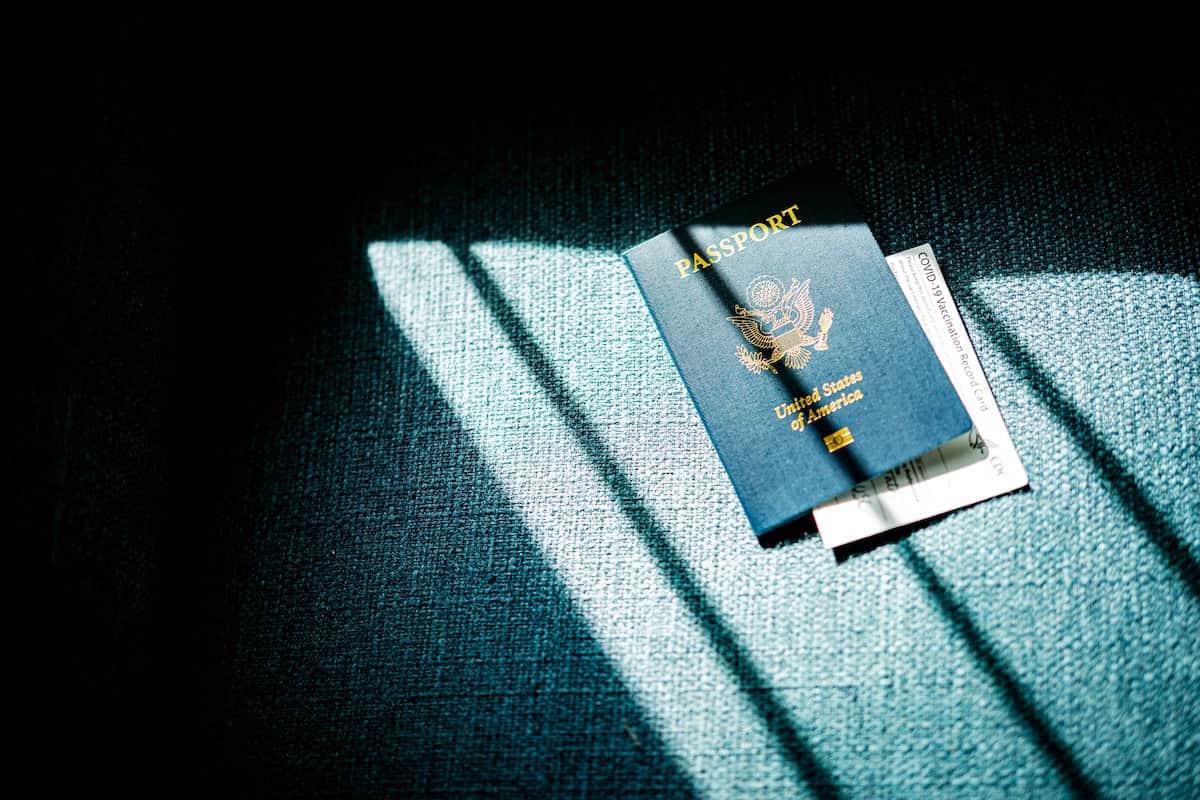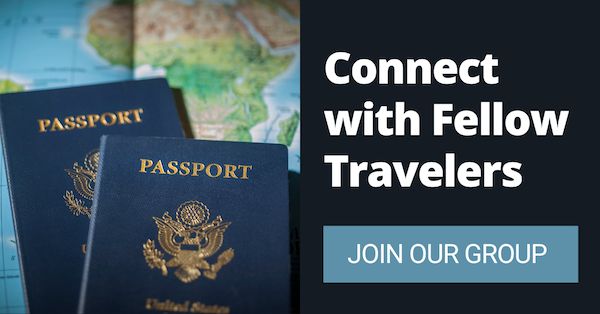
Can You Fly Without an ID? Your Complete Guide for When Travel Documents Go Missing
By: Mike Coleman
Skip to Section
Article Summary
You reach for your wallet at the airport gate and…panic. Your driver’s license has vanished into thin air, and your flight boards in an hour. Before you start hyperventilating, take a breath – you might still make that plane, but your options depend on where you’re flying.
This guide breaks down what happens when you lose your ID right before travel, from TSA’s identity verification process for domestic flights to the harsh reality of international travel without a passport. You’ll learn the step-by-step process for getting through security without ID, what documents actually help your case, and why arriving three hours early becomes non-negotiable. The article covers both lost driver’s license and lost passport scenarios, plus smart prevention strategies that’ll save you from this nightmare in the future.
- TSA can verify your identity for domestic flights through personal questions and database checks, but plan for 30 minutes to over an hour of additional screening
- International travel requires a valid passport with zero exceptions – airlines won’t even let you check in without one
- Multiple forms of identification like credit cards, insurance cards, and prescription bottles strengthen your verification case
- Lost passport emergencies abroad can be resolved within 24 hours through U.S. embassies, but you’ll need proof of citizenship and travel plans
- Prevention beats panic every time – photographing documents and spreading IDs across different bags saves major headaches
You’re at the airport, ready to board your flight, when you reach for your wallet and…it’s gone. That sinking feeling hits as you realize your driver’s license has vanished. Maybe it’s tucked away in yesterday’s jeans, or perhaps it slipped out at the coffee shop. Either way, you’re standing at the gate without the one thing everyone assumes you need to fly.
Here’s what you need to know: you might still make that flight, but your options depend entirely on where you’re headed.
Flying Domestically Without ID: You Have Options
The TSA has specific procedures for travelers without identification, and they’re more accommodating than you might expect. If you’re flying within the United States, losing your ID doesn’t automatically ground you.
TSA agents can try to verify your identity through other processes. You’ll go through additional screening that involves answering personal questions about yourself, like your current address, previous addresses, family members, or other personal information they can cross-reference in their databases. The agents have access to various government records, so they can confirm details you provide.
Plan for extra time. The TSA recommends arriving at least three hours early if you’re flying without ID. This process can take anywhere from 30 minutes to over an hour, depending on how busy security is and how quickly they can verify your information.
International Travel: Different Rules Entirely
If you’re heading overseas, the news isn’t as encouraging. You absolutely need a valid passport for international flights. Airlines won’t even let you check in without scanning your passport first – their computer systems won’t allow it.
Lost your passport the day before your trip to Rome? You’re not making that flight tomorrow. It’s devastating, especially if you’ve been planning this trip for months, but there’s simply no way around this requirement.
What Documents Help When You Don’t Have ID
While TSA prefers government-issued photo identification, they may accept other documents to help verify who you are. The more documentation you can provide, the better your chances of getting through security.
Bring whatever you have from this list:
Financial documents: Credit cards, debit cards, bank statements, checkbooks with your name and address
Government documents: Social Security card, birth certificate, marriage certificate, military ID, employee ID cards
Personal documents: Insurance cards, utility bills, library cards, gym membership cards, prescription bottles with your name
Digital options: Photos of your lost ID on your phone, boarding pass confirmations, hotel reservations
The key is having multiple forms with your name on them. Each additional document strengthens your case and makes the verification process smoother.
Step-by-Step Guide for Flying Without ID
Gather your documents: Collect every piece of identification you can find. Check your wallet, purse, phone, and luggage for anything with your name on it.
Arrive early: Get to the airport at least three hours before your domestic flight. This isn’t negotiable – the identity verification process takes time, and you don’t want to miss your flight because you underestimated how long it would take.
Be upfront with TSA: Tell the security agent immediately that you don’t have your ID. Don’t try to hide it or hope they won’t notice. They deal with this situation regularly and have established procedures to help you.
Answer questions honestly: Be prepared for personal questions. They might ask about previous addresses, family members’ names, or other details from your background. Answer truthfully and completely – lying will only make things worse.
Stay calm and patient: The process can feel invasive, but remember that TSA agents are trying to help you get on your flight safely. Being cooperative and patient will make everything go more smoothly.
The REAL ID Requirement
As of May 7, 2025, you need a REAL ID-compliant driver’s license to fly domestically. If your lost ID wasn’t REAL ID compliant anyway, you would have faced additional screening regardless.
After the deadline, TSA will still allow travelers without REAL ID to fly domestically, but they’ll go through the same additional screening process described above. It’s just one more reason to keep track of your identification documents.
Lost Passport Scenarios
Losing a passport creates different challenges depending on where you are and where you’re trying to go.
Domestic Travel with a Lost Passport
Good news: you don’t need a passport for domestic flights within the United States. This includes flights to U.S. territories like Puerto Rico, the U.S. Virgin Islands, and Guam. Your driver’s license works fine, or you can use the TSA identity verification process if needed.
International Travel Tomorrow
If you need to fly internationally tomorrow and you’ve lost your passport, your options are extremely limited. Same-day passport services exist, but they’re only available at a handful of passport agencies nationwide, and appointments are nearly impossible to get without a true emergency.
Call the passport information center at 877-487-2778 immediately. You’ll need to prove a need, like a life-or-death emergency, a serious illness, or the death of a family member abroad. A vacation likely will not get you an appointment.
Lost Passport While Abroad
If you lose your passport while traveling internationally, contact the nearest U.S. embassy or consulate immediately. They can issue emergency passports, often within 24 hours.
You’ll need:
- A passport photo (many embassies can take these on-site)
- Proof of U.S. citizenship, if available
- Your travel itinerary showing immediate travel plans
- A police report if the passport was stolen
- Payment for the replacement fee
Emergency passports have limited validity and will get you home, but they might not work for travel to other countries.
Smart Prevention Strategies
The best way to handle a lost ID situation is to prevent it from happening in the first place.
Before you travel: Take photos of all your identification documents and email them to yourself. While photocopies won’t get you on a plane, they make replacement much easier.
Check expiration dates on all your documents. TSA accepts expired driver’s licenses up to one year past expiration, but it’s better to travel with current identification.
Make copies of important documents and leave them with someone you trust at home.
Consider getting a passport card as backup identification for domestic flights.
While traveling: Never keep all your identification in one place. Spread important documents between your wallet, carry-on bag, and checked luggage.
Use hotel safes for documents you don’t need to carry daily.
Some experienced travelers carry an expired passport as backup identification – it’s still a government-issued document that can help verify your identity.
Airport-Specific Tips
Different airports handle the no-ID situation with varying levels of efficiency. Larger airports typically have more experience with these cases and dedicated personnel to handle identity verification.
If you’re flying from a smaller regional airport, the process might take longer simply because the staff deals with this situation less frequently. Factor this into your arrival time planning.
Some airports have designated areas for additional screening, while others handle it at the regular security checkpoint. Either way, be prepared for the process to attract some attention from other travelers.
What Happens During Additional Screening
The identity verification process involves more than just answering questions. TSA may:
- Conduct additional physical screening of you and your belongings
- Swab your hands and luggage for explosive residue
- Search your carry-on bags more thoroughly
- Ask you to remove shoes and outerwear for additional inspection
This isn’t punishment, but standard procedure for anyone going through alternative identity verification. Stay patient and cooperative throughout the process.
International Travel Insurance Considerations
If you’re dealing with a lost passport situation abroad, contact your travel insurance provider immediately. Many policies cover emergency document replacement costs, including expedited passport services and additional accommodation expenses if you’re delayed.
Keep all receipts related to your lost document situation – replacement fees, additional transportation costs, and extended hotel stays. Your insurance might reimburse these expenses.
When All Else Fails
Sometimes, despite your best efforts, you might not be able to fly on your scheduled date. If this happens:
- Contact your airline immediately to discuss rebooking options. Many airlines waive change fees for documented emergencies, including lost identification situations.
- Check with your travel insurance about coverage for missed flights due to lost documents.
- Consider alternative transportation if you’re traveling domestically. While slower, driving or taking a bus might get you to your destination without the ID requirements of air travel.
Making the Best of a Bad Situation
Losing your ID before travel is stressful, but it’s not the end of the world. Thousands of travelers face this situation every year, and most of them still make their flights.
The key is acting quickly, gathering whatever documentation you have, and arriving at the airport with plenty of time to spare. TSA agents are generally helpful when you’re honest about your situation and cooperative during the verification process.
If you do miss your flight because of lost ID, remember that this makes for a great travel story later. Plus, you’ll never forget to double-check your identification before traveling again.
Your travel plans might be delayed, but they don’t have to be destroyed. Take a deep breath, follow the steps above, and you might be surprised how often things work out in the end.
Featured image by Oxana Melis on Unsplash
Information published on this website and across our networks can change over time. Stories and recommendations reflect the subjective opinions of our writers. You should consult multiple sources to ensure you have the most current, safe, and correct details for your own research and plans.
Frayed Passport is a participant in the Amazon Associates Program, an affiliate advertising program designed to provide a means for sites to earn advertising fees by advertising and linking to Amazon.com. We also may share links to other affiliates and sponsors in articles across our website.




